Azure-winged Magpie
As its name suggests, this bird has a beautiful azure-colored tail. One was spotted perched in a tree in June.
activities
The Kawasaki Office is located in the city of Kawasaki, Kanagawa Prefecture, Japan. Even though it is located in the city, surrounded by residential neighborhoods, business districts and high-rise buildings, the Kawasaki Office has certain green areas that have become an important habitat for birds.
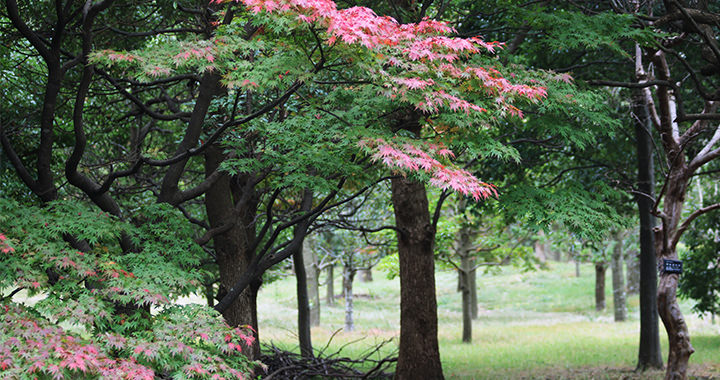
While the Kawasaki Office is situated near a main train station, trees have been planted on the east and south sides of the site, and there are spacious grassland areas, including a small forest and lawn space. The office is also a short distance from the Tama River, and is expected to contribute to the development of the region's ecological network.
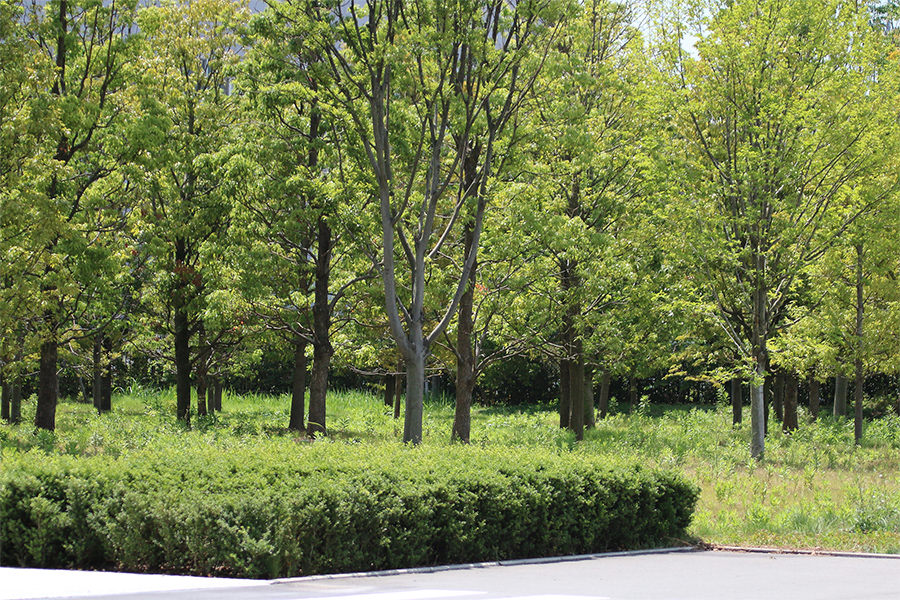
The Eurasian Skylark is a rare species that has not been observed in urban areas much in recent years. A survey in 2017 confirmed the presence of three nesting Eurasian Skylarks, who prefer croplands or grasslands, when they were seen fighting to defend their territory.
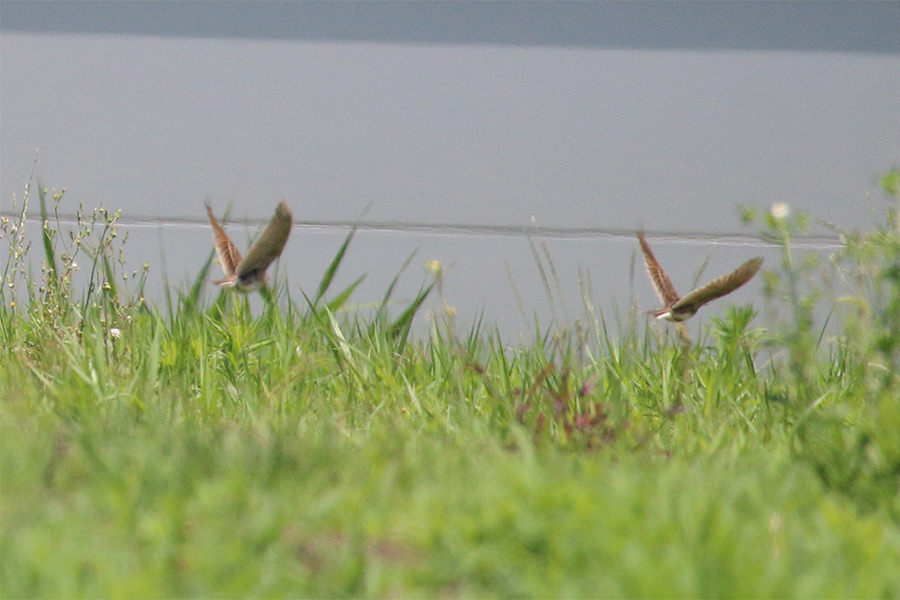
Major activity
We started conducting spot censuses of birds at our site from 2016. Many birds use the grassy areas as feeding grounds. We have been able to confirm swallows and starlings as they frequently circulate between our site and neighboring buildings when they are thought to have a nest. We also see sparrows feeding their chicks as well as parents and chicks looking for food together.
With the assistance of the Wild Bird Society of Japan, we have observed 16 species of birds on our site to date.
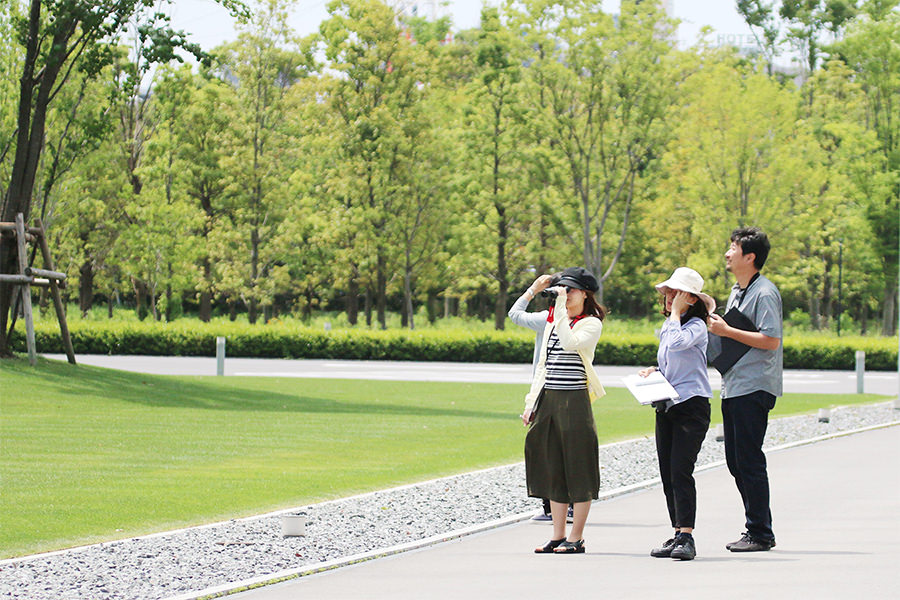
Activities: Case study
We installed nest boxes at three locations on our site. For better coexistence with wild birds, we will continue to monitor the conditions in which birds raise their chicks.
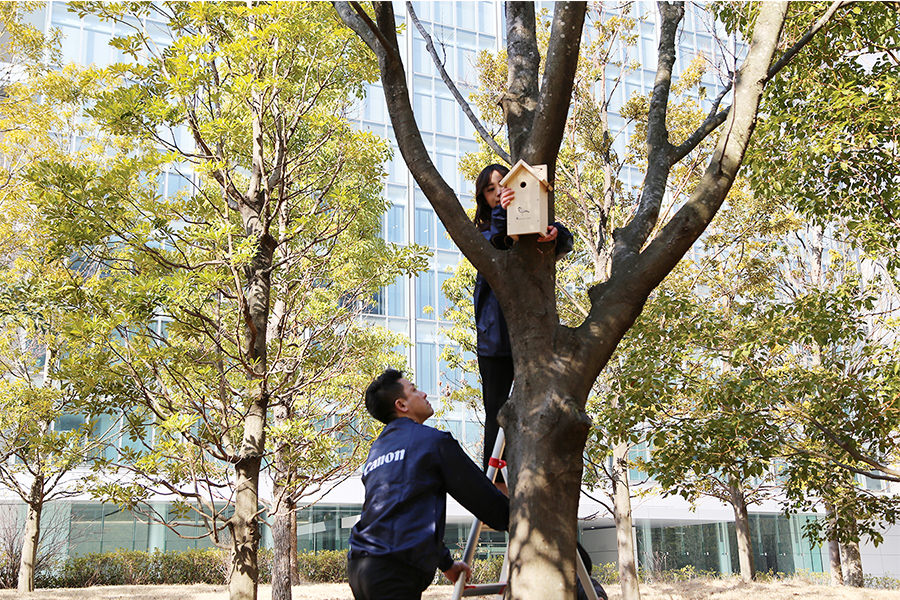
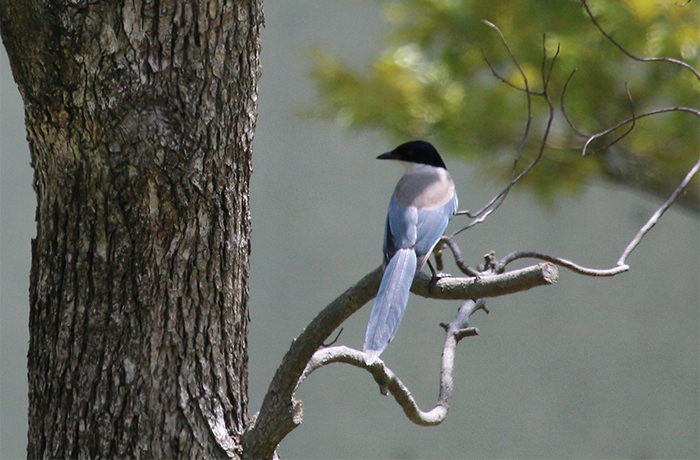
As its name suggests, this bird has a beautiful azure-colored tail. One was spotted perched in a tree in June.
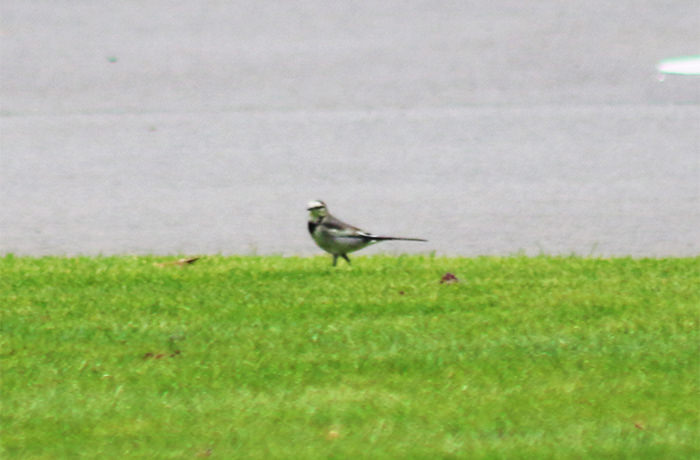
This bird can be found in such wide-open areas as lawns or streets. Notable for their white cheeks, clear voice and distinctive walk, in which the tail swings up and down, they are quite endearing to behold.
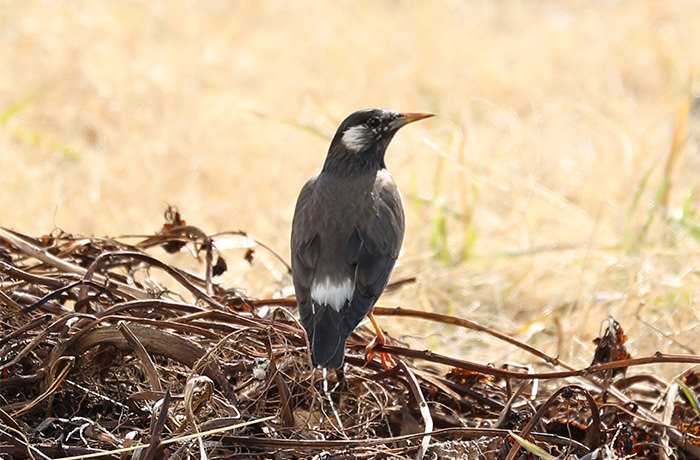
This bird is often seen taking casual strolls on the grass or in a group pecking for food. It has a vivid orange beak and legs, and it makes such calls as “kyuru-kyuru,” “jye-,” and “tui-” with a loud voice.
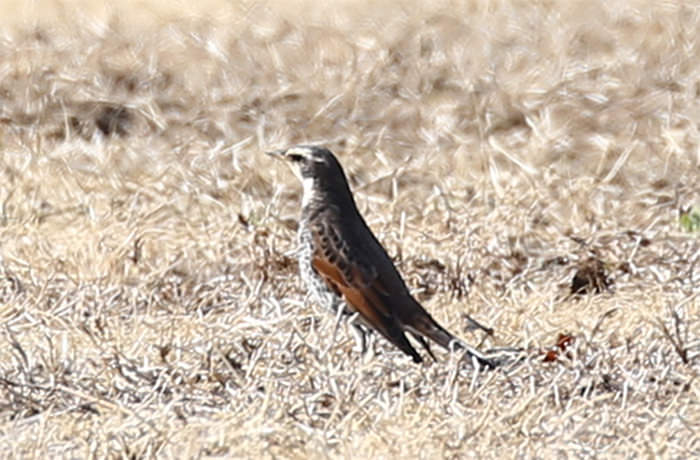
This bird comes to the forest in the fall but is found in open areas such as lawns, croplands and along rivers in winter. The brown body coloration can be either dark or light.
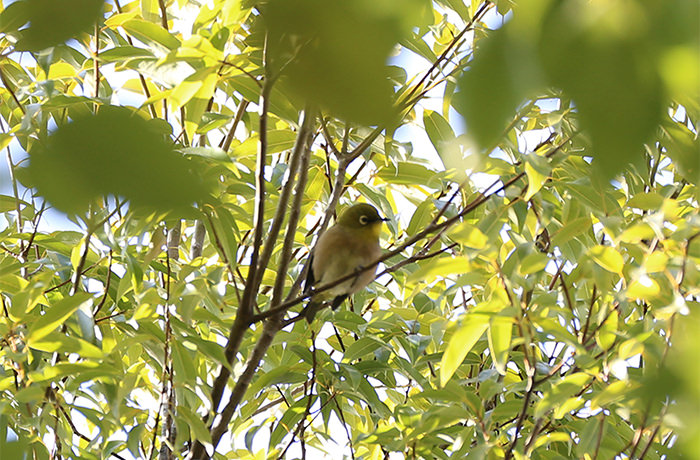
A distinguishing feature of this bird is the white ring around its eye, which contrasts well with its yellow and green body. It is very fond of the nectar of flowers such as the common camellia. One of its old nests was found on the site.
It is sometimes confused with the Japanese Bush Warbler, which is famous for its “ho-hokekyo” call.